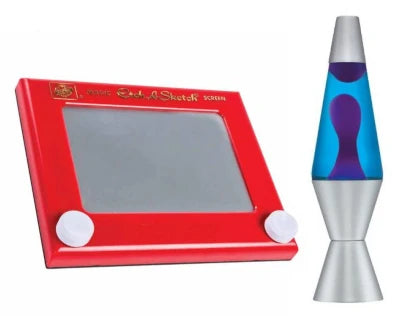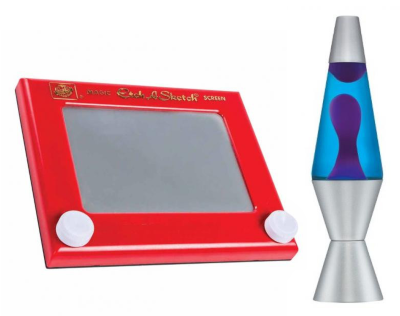Retro Toys And The STEM Lessons They Teach Us
The 1960’s, the decade that brought us lasers, space travel, and cochlear implants, also brought a wave of new toys that are still popular today. From the first human space flight in 1961 to the moon landing in 1969, the whole world was looking skyward, and this science-focused attitude resonates in the toys that were popularized in this time.

Lava Lamps
Lava lamps aren’t just a fun retro toy, they also exhibit a bizarre scientific phenomenon. Inside the lamp are two liquids: water and a hydrophobic mixture (generally mineral oil, paraffin wax, and carbon tetrachloride). The ingredients vary, but the key factor is that the two liquids don’t mix, and that one liquid is slightly heavier than the other. The other key factor, the independent variable, is the light bulb. When the light bulb turns on, the heavier liquid begins to expand, becoming less dense and floating toward the top. Once away from the lamp, it starts to cool, shrinking and becoming more dense and finally sinking back to the bottom. The result is a colorful display, and we have science to thank for it.
We have lava lamps with the genuine 1960’s look and modern twists with glitter and rainbow patterns. Find your favorite lava lamp.
Lite Brites
Though some might think these are 90’s toys, Lite Brites actually had their heyday in 1967 when it first came out, and has retained popularity due to the artistic doors it opens. Resembling pixels on a computer screen, the Lite Brite introduces the foundations of graphic design. Teachers love it for its ability to teach geometry and multiplication through geometry, and kids love telling stories on this unique platform.
We carry two Lite Brites: the classic Lite Brite and the travel-size lite brite.
Etch a Sketch
Similar to the Lite Brite in theme but much more toddler-friendly, the Etch a Sketch is still used as a sensory calming tool today, and as an art platform by extraordinarily patient artists. Preschoolers are fascinated by the tool, trying to peer inside to see how it works, teaching that there’s more than meets the eye to even simple-looking mechanical devices. In truth, the device is quite simple: a sticky aluminum powder adheres to the inside of the glass, which the stylus then scrapes off to create patterns. Shaking the device allows the aluminum to stick to the glass once again, essentially “erasing” the design.
We are honored to provide the one-and-only Etch a Sketch in our online and physical Bellingham store.
Mini Arcade Games
Just like computers have shrunk from the size of a room to the size of a cat, arcade machines have shrunk from the arcade machines of the 1960’s to mini replicas the size of your fist. Best of all, they don’t require miniature quarters to play. While arcade games aren’t universally educational, most help develop specific skills such as spatial judgment and timing. In addition, there are mini gaming consoles specifically designed to make learning more engaging and dynamic, helping kinesthetic and solitary learners. Perhaps the STEM lesson here is for parents and teachers: technology, when used with intent, can be a powerful teaching tool.
For classic arcade games turned miniature, consider the Mini Pac Man or Mini Tetris. For a learning boost, you can’t go wrong with the Math Shark.
For a retro-themed bonus, the Neon Effect Message Frame is a hit with teens and preteens, a chance to lighten up a room with positive messaging.


